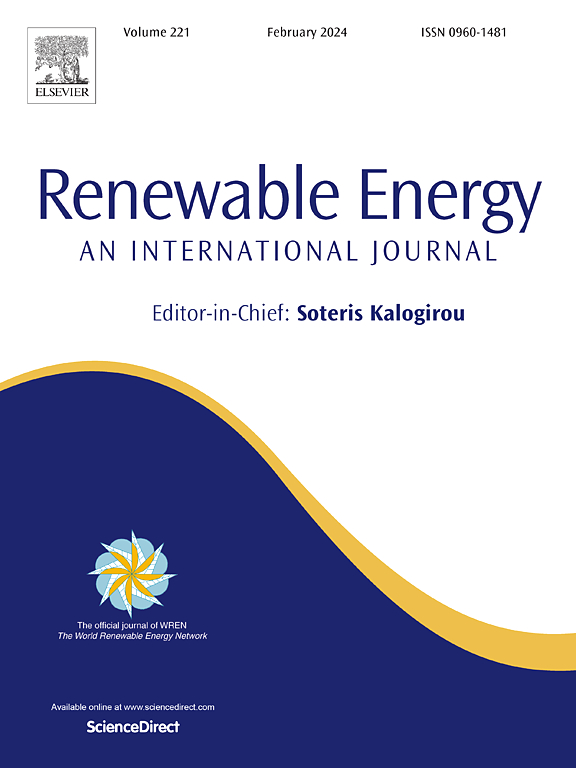Petrogenesis, radiogenic heat production, and geothermal potential of host rocks in the Al-Lith geothermal system, Western Saudi Arabia
IF 9
1区 工程技术
Q1 ENERGY & FUELS
引用次数: 0
Abstract
Geothermal energy is emerging as a sustainable and low-carbon energy source globally, gaining significant attention worldwide. In the Middle East, the exceptional situation of Saudi Arabia along the western coast of the Red Sea makes it a host to many geothermal resources; however, the geochemical characterization of the geothermal resource remains limited. This study investigates the geochemical and mineralogical characteristics of the Al-Lith geothermal system, combining geochemical evaluation with microscopic investigation. Whole-rock geochemistry focuses on major, trace, and rare earth elements, including radioactive elements like uranium, thorium, and potassium, to assess radiogenic heat production. Results reveal that the study area is dominated by granitic and low to medium-grade metamorphic rocks, with low to moderate mineral alteration linked to hydrothermal activity. Granitic rocks exhibit higher radiogenic heat production (average 0.71 μW/m3) than metamorphic rocks (average 0.68 μW/m3), primarily due to elevated uranium and thorium concentrations. Elemental enrichment and depletion trends suggest a volcanic arc granite origin, reflecting subduction-modified mantle and crustal sources. These felsic rocks enhance geothermal potential by providing thermal buffering and facilitating heat transfer. This study provides critical insights into the geochemical and radiogenic heat characteristics of host rocks in Al-Lith, offering a foundation for geothermal resource modeling and exploration.
沙特阿拉伯西部Al-Lith地热系统岩石成因、放射成因产热及寄主岩地热潜力
地热能作为一种可持续的低碳能源正在全球范围内兴起,受到世界各国的广泛关注。在中东,沙特阿拉伯位于红海西岸的特殊地理位置使其拥有许多地热资源;然而,地热资源的地球化学表征仍然有限。本文采用地球化学评价与显微研究相结合的方法,研究了al - lite地热系统的地球化学和矿物学特征。全岩地球化学侧重于主要元素、微量元素和稀土元素,包括铀、钍和钾等放射性元素,以评估放射性成因热的产生。结果表明,研究区以花岗质和中低变质岩为主,并伴有与热液活动有关的中低蚀变。花岗岩(平均0.71 μW/m3)比变质岩(平均0.68 μW/m3)表现出更高的放射性成因热,这主要是由于铀和钍浓度升高所致。元素富集和亏缺趋势提示火山弧花岗岩成因,反映了俯冲修饰的地幔和地壳来源。这些长英质岩石通过提供热缓冲和促进热量传递来增强地热潜力。该研究为进一步认识Al-Lith寄主岩的地球化学和放射性成因热特征提供了重要依据,为地热资源建模和勘探提供了基础。
本文章由计算机程序翻译,如有差异,请以英文原文为准。
求助全文
约1分钟内获得全文
求助全文
来源期刊

Renewable Energy
工程技术-能源与燃料
CiteScore
18.40
自引率
9.20%
发文量
1955
审稿时长
6.6 months
期刊介绍:
Renewable Energy journal is dedicated to advancing knowledge and disseminating insights on various topics and technologies within renewable energy systems and components. Our mission is to support researchers, engineers, economists, manufacturers, NGOs, associations, and societies in staying updated on new developments in their respective fields and applying alternative energy solutions to current practices.
As an international, multidisciplinary journal in renewable energy engineering and research, we strive to be a premier peer-reviewed platform and a trusted source of original research and reviews in the field of renewable energy. Join us in our endeavor to drive innovation and progress in sustainable energy solutions.
 求助内容:
求助内容: 应助结果提醒方式:
应助结果提醒方式:


